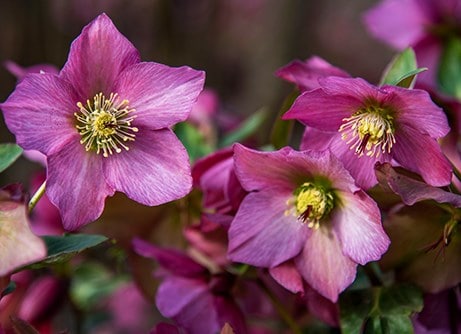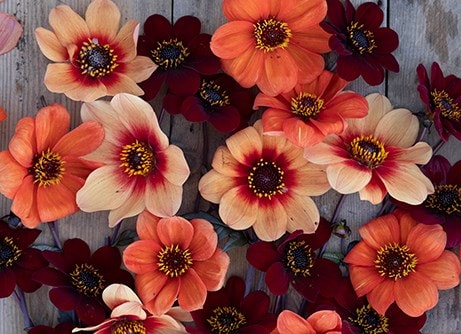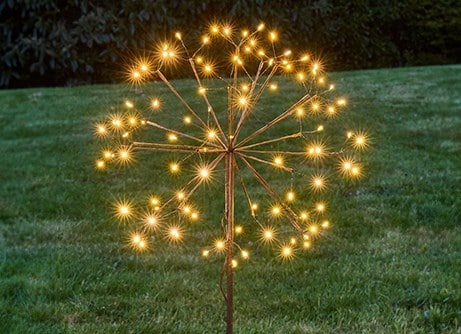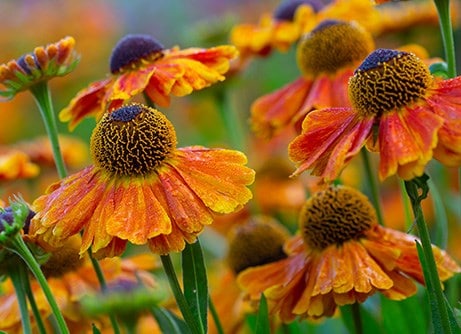Kitchen garden
- Winter pruning of apples and pears can begin after leaf-fall
- Plant fruit trees and soft-fruit bushes and canes
- Pot up herbs such as mint and chives and bring indoors for winter use
- Plant garlic cloves by the end of this month to ensure best sized bulbs next year.
- Prune grape vines after leaves have fallen
- Apply grease bands around trunks of fruit trees to protect against flightless female winter moths
- Net brassicas to protect them from hungry pigeons
- Apply 5cm (2in) layer of well-rotted compost or manure to bare plots and dig in, or leave over winter for the worms to take down.
- Cloche salad plants against frost damage
- Clear spent, old plants and compost them if disease-free
- Sow broad beans and hardy peas under cloches and protect with traps against mice
- Lift and divide rhubarb keeping the youngest most vigorous pieces to replant
- • Take hardwood cuttings of blackcurrants, gooseberries, redcurrants and white currants
Ornamental Gardens
- Cut back herbaceous perennials, leaving 15cm (6in) of old growth to help protect the crown from winter damage
- Leave grasses uncut for winter decoration
- Mulch borderline hardy plants such as Agapanthus and Phygelius where grown in borders
- Lift frost blackened cannas and dahlias and tuberous begonias, cut back stems and store in damp peat in a frost free shed or cellar to overwinter.
- Plant bare rooted shrubs, bushes and trees as soon as possible after purchase
- Begin pruning shrubs and trees after leaf fall
- Check tree stakes and ties to protect against wind-rock
- Prune long stems of roses by one third to reduce wind rock
- Clear away old fallen foliage which can be host to pests overwinter
- Shred woody material to enable speedier composting
- Continue planting lilies in containers or the border
- Insulate containers with bubble wrap to protect containerised plants’ roots from frosts
- Take hardwood cuttings of roses and other deciduous ornamental shrubs
|
Lawn
- Scarify lawns to remove dead that and moss and increase air flow around grass rhizomes.
- Keep off lawns in wet weather to avoid compacting the soil and drainage problems
- Aerate lawns by spiking to improve drainage particularly on heavy clay soils
- Topdress lawns with sieved loam, sand and well-rotted compos, to smooth out slight level irregularities and to improve grass vigour
- Grass growth will be slow this month so mowing will have all but stopped. Use this opportunity to service the lawn mower.
Glasshouse & indoor plants
- Apply insulation to inside of greenhouses and install heaters
- Reduce watering and feeding of houseplants as growth slows with lower temperatures and light levels
- Pot up Hippeastrum bulbs for flowering at Christmas
- Bring pots of forced hyacinths into a light and cool room once the shoots have reached 4-5cm long (1½-2in) in length
- Ventilate greenhouses freely on mild days to reduce humidity and risk of fungal diseases
- Bring tender containerised plants into the greenhouse before the first frosts
- Avoid overcrowding greenhouses which will increase risk of fungal disease
Ponds and wildlife
- Clean out bird boxes of old nesting material and disinfect them
- Regularly disinfect bird tables as birds are visiting more frequently in colder weather
- Where space permits, create a log pile which will be used by hibernating hedgehogs and toads
- Install and regularly top-up feeders to sustain birds through cold weather
- Remove, clean and store pumps and fountains
- Stop feeding fish as weather turns cold, as food will remain un-eaten and contaminate the water.
- Net ponds to prevent leaves entering water if sited near to or beneath deciduous trees and shrubs
- Install a low voltage pond heater to keep an area of the water’s surface free of ice.
- Net ponds against herons that may take greater advantage of sluggish ornamental fish
















